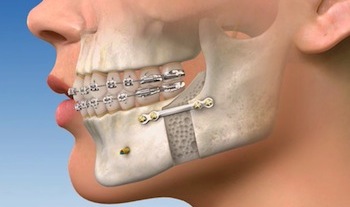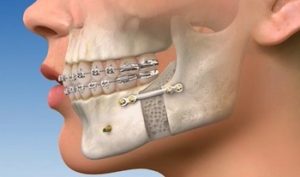What Is Orthognathic Surgery?

The Orthognathic procedure or surgery is one performed to remedy skeletal and dental irregularities, minor or major ones. It is also commonly referred to as corrective jaw surgery. The word orthognathic comes from the Greek word orqos and gnaqo, which means to straighten and jaw, respectively. It is performed to correct conditions of the jaw and face that have an effect on the over-all structure of the face. Patient’s chewing, speaking and breathing conditions can be improved through this surgery. It is mostly to correct functional problems but may also dramatically enhance the patient’s appearance. This procedure is also performed in treatment of inborn conditions like the cleft palate.
 This surgery is performed by an oral and maxillofacial surgeon (OMS) together with an orthodontist. In this procedure, patient usually use braces before and after the surgery. Thereafter, they are to use retainers once the braces are finally removed. It is performed on the upper jaw, lower jaw, or both.
This surgery is performed by an oral and maxillofacial surgeon (OMS) together with an orthodontist. In this procedure, patient usually use braces before and after the surgery. Thereafter, they are to use retainers once the braces are finally removed. It is performed on the upper jaw, lower jaw, or both.
Corrective jaw surgery might be needed in the following conditions:
Corrective jaw surgery is rarely essential to carry out. Orthodontics is not the only option to correct teeth alignment and teeth bite. It is only performed when appropriate and with the consent of the patient.
In a corrective jaw surgery, the surgeon cuts the jawbones of the patient and then places them in the proper alignment. Once placed in the correct position, screws and bone plates are used to ensure that the bones will not be removed from their new position. It requires a one to two days’ stay in the hospital for the surgery. Recovery from the procedure usually takes place around three to six weeks.
As mentioned, braces are placed before the surgery on the patient. This takes around 9 to 18 months to level and align the teeth. Around six weeks after the surgery, the orthodontist will finish aligning the teeth and then he will eventually remove the braces. This procedure takes around 12 to 24 months. The entire process may take several years to complete.
As to eating, the opening and closing of the mouth may be limited by elastic bands and the swelling after surgery. Therefore, patients are encouraged to eat and drink soft and mushy food on the first day and avoid meat and hard food. Afterwards, the patient may gradually change and go back to his normal diet.
The risks orthognathic surgery may include bleeding and swelling in the area of the surgery. It may also include some infection and adverse reaction to anesthesia. More invasive surgery can cause damage to nearby bone or gums and the anesthetic may cause numbness in similar areas. Therefore, doctor’s instructions should be followed for home-based oral care for proper and fast recovery.
Written by Dr. Darren Wittenberger, is the best orthodontist for braces Columbia MO has to offer, and owner of his own practice, Advance Orthodontics. Dr. Wittenberger enjoys sharing his expertise to ensure people can maintain the healthiest, straightest teeth possible!
